Industry Knowledge
The Role of Computer Vision for Smart and Safe Autonomous Driving
Realize a future of safe and reliable self-driving cars with computer vision for autonomous vehicles.
Can a vehicle gain eagle-eyed vision to safely navigate intricate roads? It seems like science fiction, but recent advances in artificial intelligence services are making this dream a reality. Computer vision for autonomous vehicles promises digital eyes for self-driving cars to safely transport passengers to their destination. Fasten your seatbelts as we discover why computer vision is the key to tomorrow's smart and secure vehicles.
What is Computer Vision in Autonomous Driving?
Imagine a technology that can see, comprehend, and interact with the world around it. That is computer vision in a nutshell. This AI-influenced field focuses on enabling machines to interpret and understand visual data, much like how humans use their vision to gather information about their surroundings.
Car manufacturers install various automated technologies on vehicles, resulting in machines that offer different levels of self-driving capabilities. SAE International, a global association for automotive engineers, has defined levels of driving automation to classify the capabilities of autonomous vehicles. At Levels 0 to 2, a car only has automated support capabilities but still requires a human driver to operate. Meanwhile, Levels 3 to 5 have technologies that will not require drivers to take the wheel except in special conditions. [1]
What does a highly automated car look like? Such a vehicle has a sophisticated machine vision system comprising cameras, sensors, and processors. Cameras and sensors act as the car’s organs for collecting information that the processor—the system’s brain—interprets, acts, and can learn upon.
Here is how the computer vision workflow typically works:

1. Data Capture:
Cameras and sensors record live images and videos of the environment around the vehicle.
2. Processing:
Onboard processors analyze visual data, identifying shapes, patterns, and movements.
3. Recognition:
Computers utilize semantic segmentation for autonomous driving to break down a visual scene and classify specific objects like traffic lights, humans, lane lines, and other cars.
4. Decision-making:
The car’s AI algorithms decide when to stop, maneuver, or accelerate based on what onboard computers recognize.
5. Action:
The car translates these decisions into physical actions, steering the car safely down the road.
Computer vision enables safe and efficient navigation by transforming static images into usable knowledge.
Benefits of Autonomous Driving Computer Vision
While driving, humans glance at the mirrors, scan the roads, and anticipate potential hazards. Computer vision tools in a self-driving car collect similar—if not sharper—visual instincts to execute driving tasks with human-like perception and machine-like precision. Computer vision unlocks several applications for self-driving vehicles:
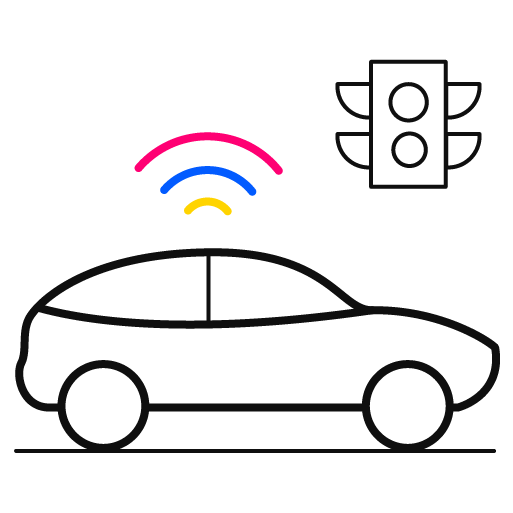
Lane Tracking:
Cameras installed on a self-driven vehicle detect and follow visible lane markings. This helps the car maintain proper lane position and make turns or stay on course on curvy roads.

Data Harvesting:
Machine vision provides valuable information beyond just real-time navigation. It can form the basis for ongoing development and training of autonomous driving systems. By reaping the benefits of outsourcing autonomous vehicle industry services, companies can collect and utilize this data to improve driving algorithms, resulting in smarter and more reliable self-driving cars.
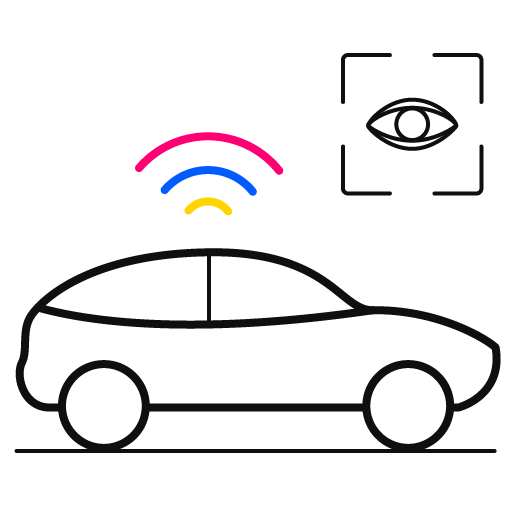
Low Visibility Driving:
Computer vision uses advanced image processing algorithms to analyze objects on the road, ensuring the vehicle's and passengers' safety even in low visibility and at nighttime.
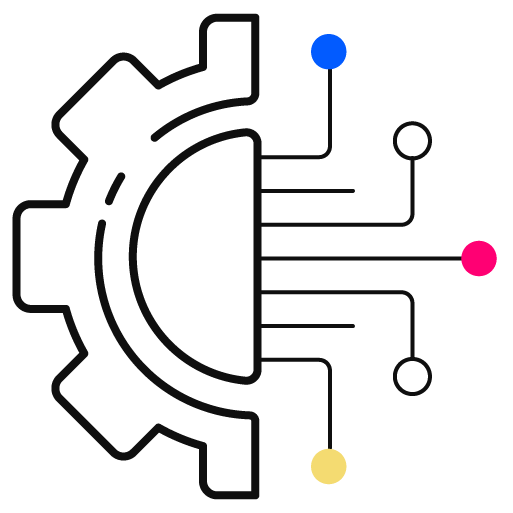
Object Identification:
Computer vision for self-driving cars can identify and differentiate objects, such as pedestrians, vehicles, and road signs within the vehicle’s environment. This capability improves reaction times to unforeseen obstacles, reducing the chances of accidents.

Road Mapping:
Machine vision technology combines cameras and sensors to create a three-dimensional map of the surroundings. This map helps to understand the layout of the road, including its curvature, elevation changes, and potential obstacles. Precise 3D mapping enables smoother navigation and nuanced driving adjustments for a more comfortable ride.
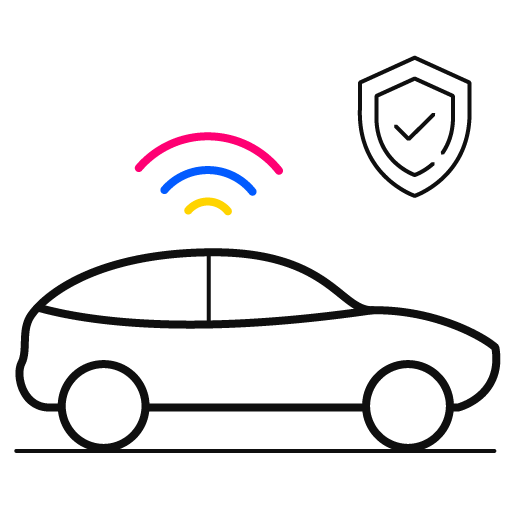
Smart Airbag Function:
Automated image processing systems play a crucial role in the correct and timely deployment of airbags during emergencies. These systems analyze the vehicle's interactions with other objects on the road to determine the severity of an impact. Based on this analysis, the technology deploys airbags to maximize passenger protection.

Vehicle Detection:
Autonomous driving utilizes computer vision to monitor and track the positions and movements of other vehicles on the road, allowing the self-driven car to maintain safe distances, match the speed of traffic flow, and execute maneuvers with precision. The technology helps keep the flow of vehicles harmonious and prevent collisions.
These use cases show a glimpse into the potential of autonomous driving computer vision to transform the transportation industry. As this autonomous technology continues to advance, more innovative applications will emerge, further solidifying the role of this AI-powered system as an indispensable asset in autonomous driving.
Challenges Facing Computer Vision Technology
The safety and reliability of self-driving cars depend heavily on their ability to accurately perceive their surroundings under all conditions. Thus, developers must address several challenges to ensure autonomous vehicle safety and efficacy.
Adjusting to Light Changes:
- Onboard cameras also experience difficulty seeing cars and other objects in varying lighting or with complex backgrounds. They must be capable of discerning and identifying objects in diverse lighting conditions.
Enduring Tough Conditions:
- The machine vision hardware must be rugged enough to endure road conditions, such as vibrations, temperature changes, and exposure to the elements. These difficulties are similar to a driver's need for a dependable vehicle that operates consistently, regardless of the driving circumstances.
Falsely Detecting Dangers:
- Computer vision systems can erroneously identify harmless objects as potential threats. Minimizing false positives leads to fewer sudden car stops or swerves that could disrupt traffic flow or impact passenger comfort.
Precisely Identifying Objects:
- Drivers, whether human or computer, must be certain that any object they see ahead is indeed a pedestrian, not a shadow or a billboard. Autonomous vehicle systems must accurately identify objects to make correct driving decisions.
Processing Data Swiftly:
- Computer vision systems require significant computational power and digital bandwidth to process the data captured by a vehicle’s cameras in real time. Without these resources, automated driving technology will fail to deliver accurate and timely decisions on the road.
Taking High-Speed Imagery:
- Capturing crystal-clear images at high speeds remains challenging for machine vision systems. Like human eyes, they struggle to focus on fast-moving objects and cameras must quickly process visual data without blurring to enable object detection and decision-making at higher driving speeds.
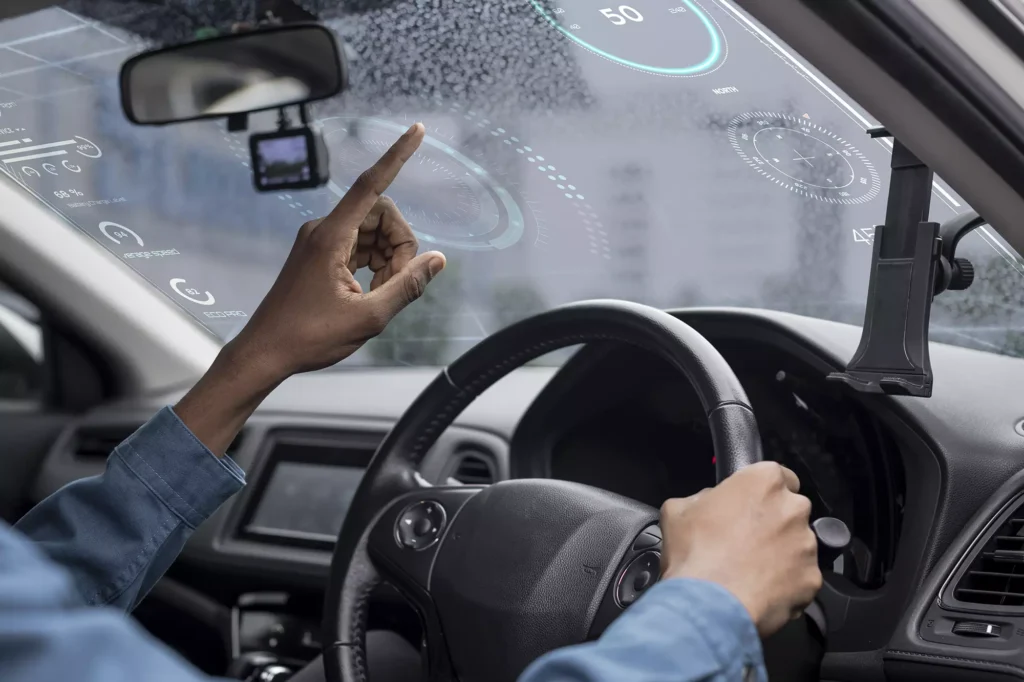
The Future of Computer Vision for Autonomous Vehicles
Strides in computer vision are setting the stage for what experts forecast to be a booming market with expansive growth potential. Some experts project the overall computer vision market—covering not just autonomous vehicles but also healthcare, retail, and other industries—to rise to $22.76 billion by 2032 from $11.9 billion in 2022.[2]
Meanwhile, the advanced driver assistance systems market—which includes computer vision, automotive imaging, and image processing—is expected to experience a compounded annual growth rate of around 11.6% from $20.74 billion in 2020 to $48.37 billion in 2028. Accident prevention will be a key growth factor.[3]
Market projections indicate that computer vision in autonomous vehicles will soon lead to a revolutionary era in driving and how we plan our cities. Soon, the phrase "hitting the road" will take on a whole new meaning as cars transform into smart assistants that make our journeys more comfortable and secure.
As we stand on the cusp of a computer vision revolution, TaskUs is ready to be your partner in this new era of automobile innovation. Discover how our supercharged blend of Human + AI solutions can help you realize your vision for the self-driving cars of the future.
- 1^SAE J3016TM Levels Of Driving Automation
- 2^Computer Vision Market Size Worth USD 22.76 Billion in 2032 | Emergen Research
- 3^Global Advanced Driver Assistance Systems (ADAS) Market Size/Share Worth USD 48.37 Billion by 2028 at a 11.6% CAGR: Zion Market Research
References
We exist to empower people to deliver Ridiculously Good innovation to the world’s best companies.
Services









